Two weeks ago I wrote about using water in a garden to reflect the things around it. Water has been used this way for a very long time, and often with a warning attached: think back to the Greek legend of Narcissus, the young boy who fell in love with his reflection in a pool and died.
Reflections are tricky things, full of symbolism and possibility. Consider mirrors, for example. Viewed positively, they are a way of looking inward and gaining self-knowledge; viewed negatively they are signs of vanity and excessive self-regard. Which explains why Narcissus died — he couldn’t tear himself away from his own reflection.
Interior designers often use mirrors to make a space seem larger. The same thing works outdoors. A small garden can seem much larger when a mirror is well positioned. Sometimes the eye is tricked, trompe l’oeil style, into thinking the garden extends beyond its borders.
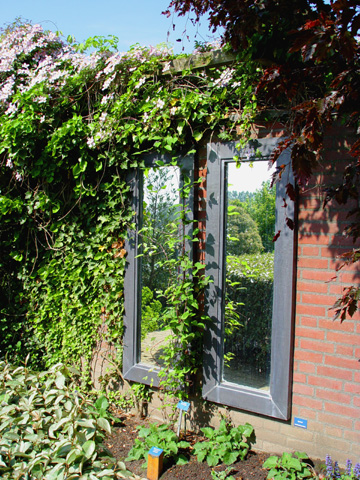
This image is from Maureen Gilmer’s MOPlants. I don’t know where the garden mirror is located; I found the photo on-line.
Other times the mirror reflecting the garden is a decorative feature, reflecting the people in it.

This photo is from the Art of Gardening. It shows a home-made mirror in a garden in Buffalo, New York.
But mirrors can do much more. In the photo below, I am taking a photograph of a sculpture — and a photograph of myself. Did I take this picture to record my presence in a particular place at a particular time? to capture an image of a work of art? to show to friends when I got home.? Maybe it was vanity — maybe I thought I looked good that day and wanted a picture to prove it. Whatever prompted me to take the photo, though, the result is the same. I am mirrored in the landscape behind me. Visually I become part of the sculpture, and part of the world that surrounds it.
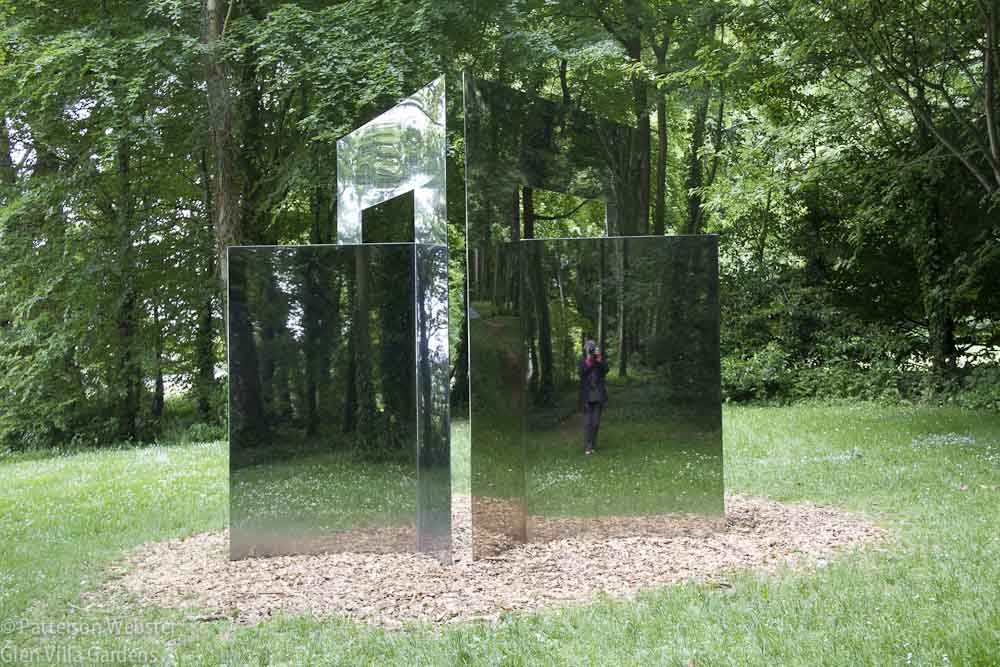
Gate: a sculpture by Rob Ward at the Cass Sculpture Park in Sussex, England. The title invites people to enter it. So does the shape, although that is hard to see in this photo.
Mirrors link us to our gardens, putting us quite literally into the picture. But that picture isn’t always an accurate one. How many birch trees are there in the photo below? Are we seeing a reflection of the forest or are we looking through the tinted plexiglass at the forest beyond? Or are we doing both?
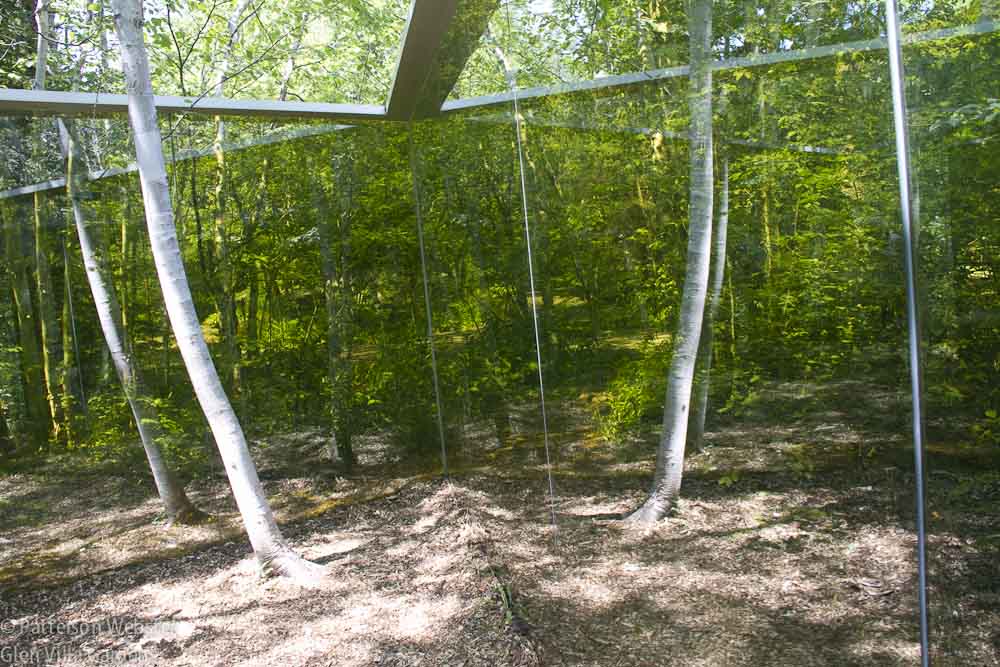
Réflecions Colorées, a plexiglass sculpture by Hal Ingborg at the Reford Gardens in Metis, Quebec, both mirrors the surroundings and allows us to look through it to the forest beyond .
Some years ago I visited Le Jardin Precambrien at Val David, Quebec. An elaborate mock Italianate fountain created by the Quebec artist Marc Dulude was set in the forest. The water in the fountain was suggested with mirrors set at odd angles. Seen together, the mirrors broke the surroundings into fragments, sending a message about a world at odds with itself.
At the same time, the distorted reflections spoke of county fairs and the fun houses children like to walk through. The mirrors intrigued spectators of all ages, made them laugh to see themselves turned upside down, stretched wide or narrowed to a point. And to see the world treated in the same way.
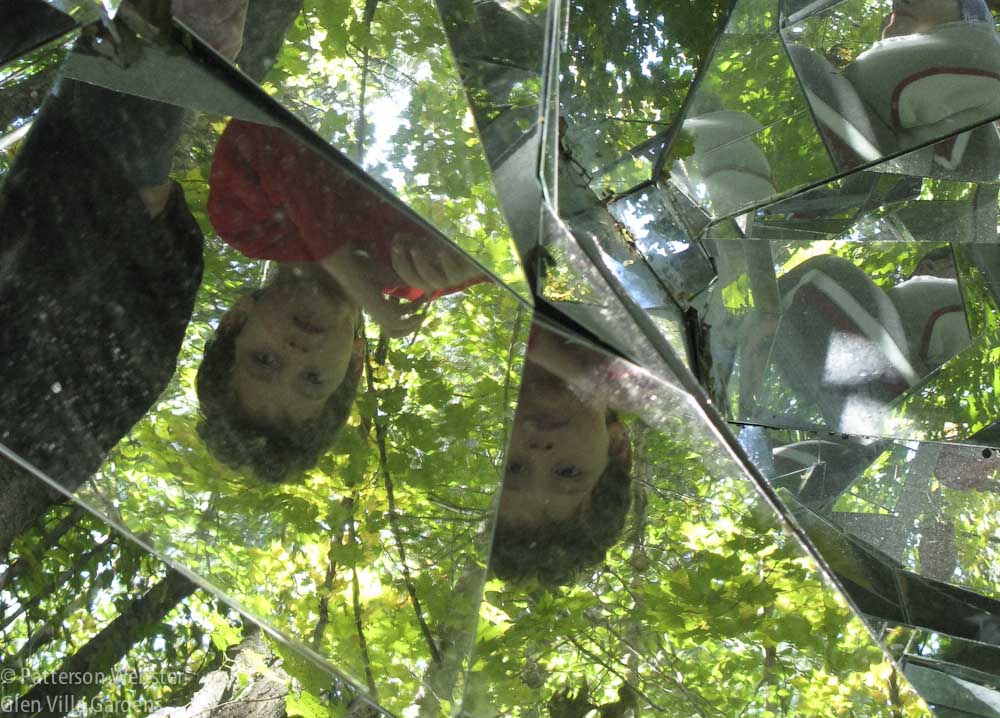
A boy is turned upside down as he looks into the mirror. Trees towering above him seem to be growing upside down, too.
Mirrors aren’t used in gardens very often, and when they are, their primary purpose is to make a space seem larger. I suppose this is understandable: people may be afraid a mirror will break or get dirty, and that certainly can happen. Even so, it seems a shame. There’s an opportunity that’s being missed.
Searching through my collection of photographs from around the world, I found many images of mirrors used outdoors as part of a piece of art. I found very few where mirrors are used to add meaning to a garden. One exception is at Througham Court in Gloucestershire, England. Here the garden owner and designer Christine Facer Hoffman has keyed in on the fact that mirrors show what is behind you. She has used this metaphorically, to say that a mirror looks into the past.
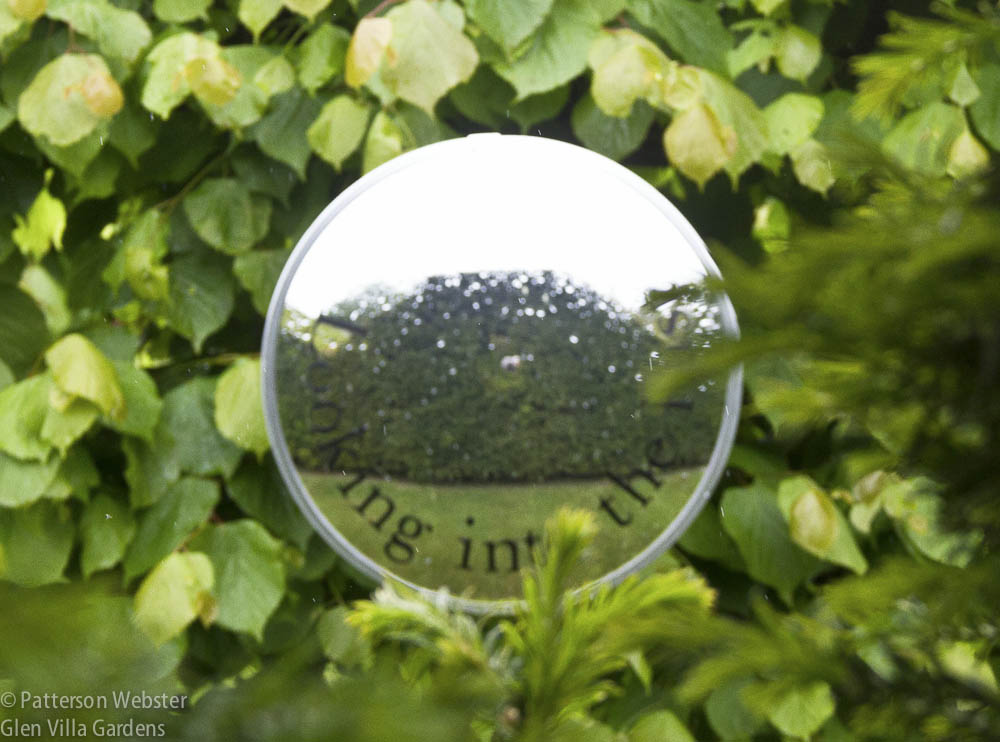
The words are hard to read but I think they say ‘Looking into the past.” Does that mean you can see yourself as you were when you were younger?
Some photographs do the same. I took this picture of me photographing myself about ten years ago, before the word selfie had been thought of. I was visiting Les Quatre Vents, the garden of the late Frank Cabot in La Malbaie, Quebec. The mirror here extends the allée. And I seem to remember that it did something more.
I think there were two mirrors, one at each end of the allée. If so, I didn’t — or couldn’t — photograph both of them. And it was so long ago that I can’t remember for sure. But when there are two mirrors, parallel to each other, they set up an infinite series of images, receding into the distance. A great idea for a garden, if you have the right place for it. Or if you have the right frame of mind.


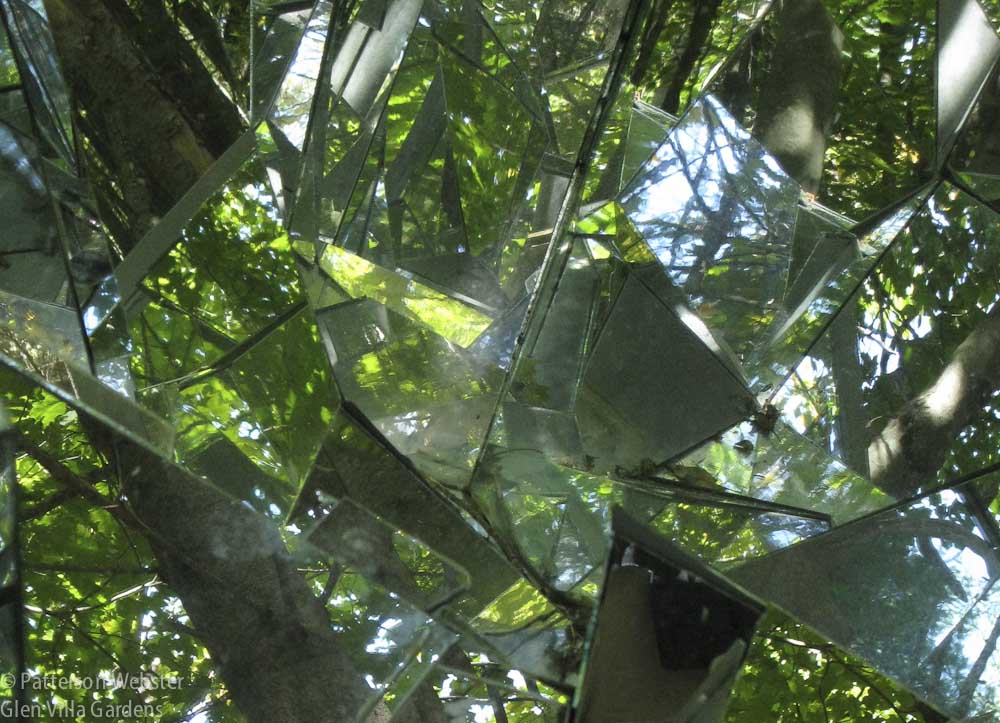
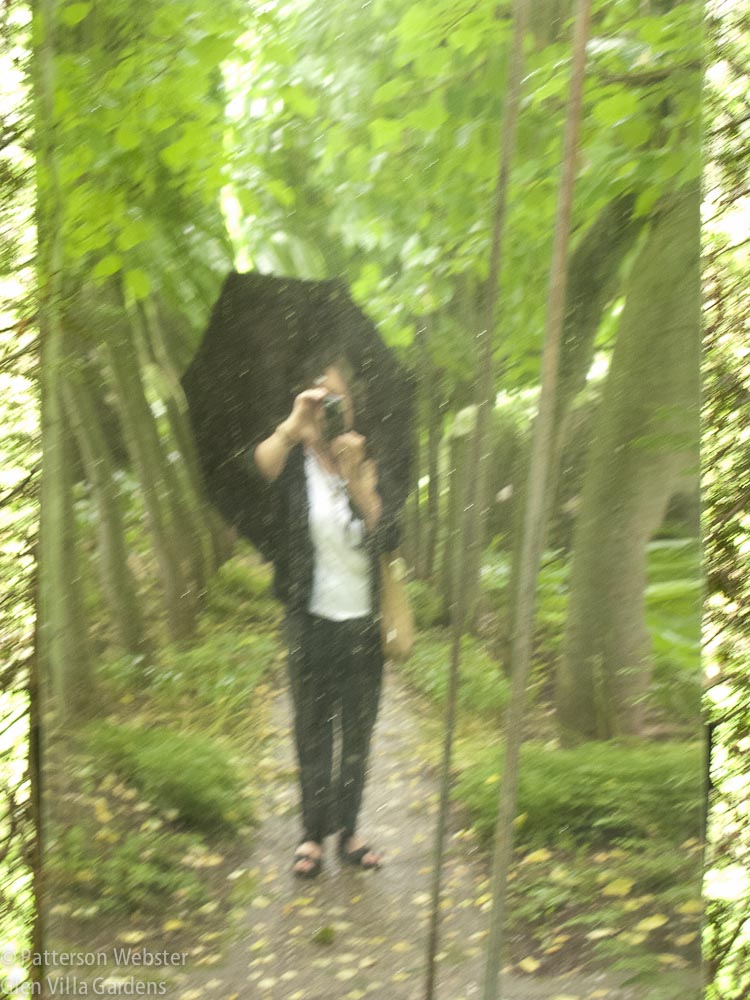




There are two mirrors at Les Quatre Vents that face each other, each at one end of the allee. It does give one a strange sensation of infinity.
Thank you for confirming my memory, Kathy. Have you seen this done in any other gardens?
I haven’t seen a double mirror set up like that in any other garden. I remember I approached it from a side path that brought me to the midpoint between the two mirrors. I looked to my left, and I looked to my right–and something wasn’t quite right. I was expecting to look “beyond” and found myself looking “into”. It took me a moment to figure out what was up. I think I have seen other mirrors in other gardens, but I would have to look through my photos to pin them down. But no other place had the double mirror.
The picture is clear now, Kathy… and is much as I remembered. I’m looking for a place to do something similar. I like the idea of infinite regression.
Certainly is captivating!
Thanks, Robert.
[…] Source: glenvillaartgarden.com […]